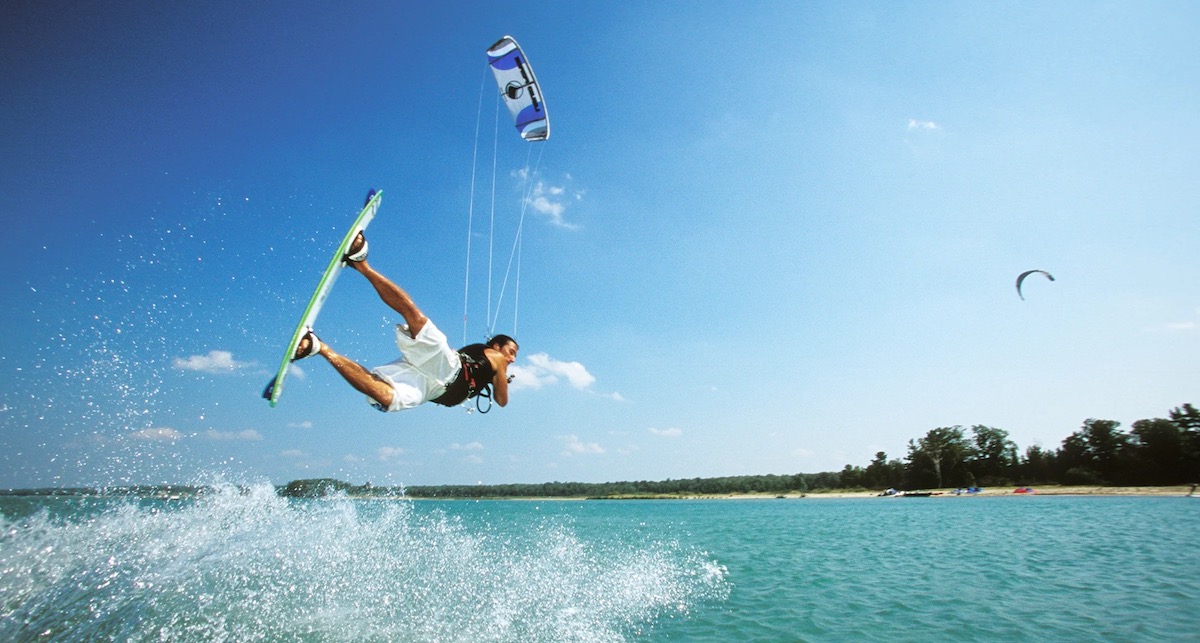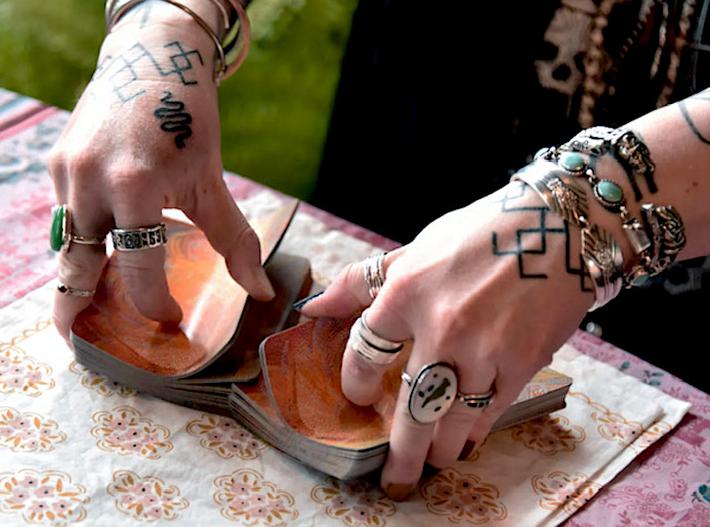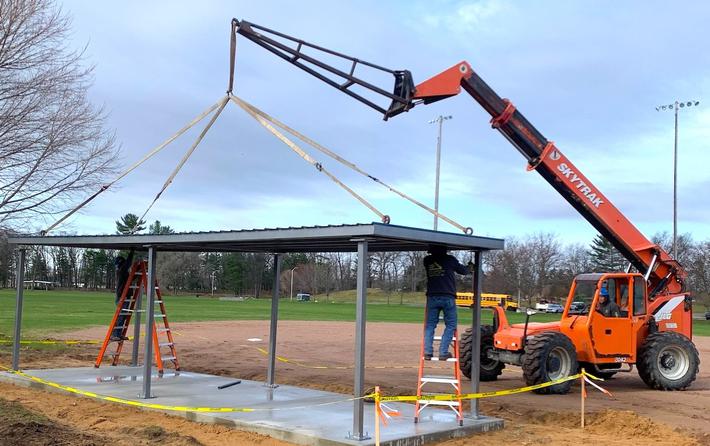
Wild Waves and the People Who Ride Them
From kiteboarding to SUPs, northern Michigan is a watersport heaven
By Craig Manning | July 8, 2023
Matt Myers has three different apps on his phone to keep track of wind conditions. When the apps tell him conditions are optimal for kiteboarding, it usually only takes a few minutes for Myers to pile himself and his equipment into the car and set course for a beach somewhere.
“When those optimal conditions hit, you’re gone,” Myers says, laughing. “No matter what you’re doing, you drop it, and you go.”
Such is the life of a die-hard watersports enthusiast who lives in northern Michigan. While the region has an embarrassment of riches to offer in terms of water resources, Myers says optimal wind is significantly harder to come by.
“This place can have amazing conditions,” Myers explains. “But the conditions are not consistent. If you’re a surfer, you don’t get good surf here three or four days a week. But when it’s good, it’s great.”
Perfect Wind, Perfect Day
What is Myers looking for, specifically? His adventure of choice is always kiteboarding. That revelation won’t come as much of a surprise to most northern Michiganders, who know Matt and his brother Keegan as the two kiteboarders who founded the M22 brand in 2004 “in search of epic wind and waves.” For years, M22 even hosted a kiteboarding school as part of its business model.
The apps in Myers’ arsenal include a “basic weather app” to keep an eye on general conditions in the area; a tool called Windfinder, which provides accurate global forecasts for wind, weather, waves, and tides; and a radar tool to monitor for rainstorms and other weather systems coming across the lake. “Because up here, usually all the wind is generated by storm systems,” he explains. “So [the radar] will give me an idea of how long I have before the storm is going to be on top of us.”
If the wind is blowing right, Myers grabs his gear and goes. But where, exactly?
While Myers has his fair share of secret spots that he’s not willing to spill, he says the golden rule for local kiteboarders is typically this: If the wind is blowing out of the north, head to Leland; if it’s blowing out of the south, make for Frankfort.
“That Frankfort/Point Betsie area is actually one of the windiest destinations in all of Michigan,” Myers reveals. “If you look at historical wind charts, Point Betsie is a consistently windy point. So anytime there’s any type of south wind pattern happening, that’s going to be the windiest spot. Back when we did kiteboarding lessons [at M22], that’s where we did a lot of our lessons.”
That’s also where Myers says he’s had the majority of his most thrilling kiting adventures in recent years—at least locally.
“There’s really nothing that beats a downwinder when it’s blowing hard south from Frankfort to Point Betsie,” he says. “You can go from Frankfort up the coast to Point Betsie. It’s a couple miles, and when the wind is strong, the waves are everything like the ocean. It’s spectacular. That downwinder, we get that maybe twice a year, and it’s always the most mesmerizing day of the year.”
What about days without “mesmerizing” conditions, though? What’s life like for a kiteboarder who lives in a place where the weather only sometimes allows for a worthwhile excursion?
For Myers, the key is not being too picky about how he spends his time out on the water. “I live right on West Bay, so I do something on the water literally every day,” Myers says. If the water is glassy, then it’s probably a stand-up paddleboarding day, or maybe an outing on a surfski—a narrow, lightweight type of kayak that is built for speed. When the wind picks up, Myers grabs his kiteboarding equipment or his wing foil.
Wing foiling is a newer watersport that uses a foilboard, a type of board that has a hydrofoil mounted on the underside rather than the fins you’d typically find on a surfboard or paddleboard. A hydrofoil makes it possible for the board and its rider to elevate above the surface of the water in a way that some say mimics the feel of flying.
The Hydrofoil Revolution
Both foilboards and stand-up paddleboards (SUPs) have become increasingly commonplace on northern Michigan’s waters. Of the two, foils are (so far) the less popular option, in part because foilboards aren’t cheap. Out in Lake Leelanau, though, an entire business has sprung up around the phenomenon of hydrofoils—and around the huge number of people who want to experience the flight-like feeling that a foilboard can conjure.
Paul Andrus is the owner and instructor at Lake Leelanau’s Lake Life Efoils, a business that is marking its third summer of operations this year. Lake Life is based specifically on the eFoil, a type of hydrofoil board with an electronic motor and propeller. That design allows for riders to fly over the water even with zero wave action—and to do so at pretty decent speeds.
At Lake Life Efoils, which gives lessons and sells boards, Andrus says each summer so far has seen a significant uptick in the number of people interested in trying out an electronic hydrofoil experience.
“The first year, people were like, ‘What is that thing?’” Andrus says. “Last year, people were like, ‘Hey, that’s a hydrofoil!’ This year, people are saying, ‘Hey, that’s a Lift eFoil, isn’t it?’ So, people are just becoming more aware of foilboards in general, and more curious to try them out.”
Like Myers, Andrus comes from a kiteboarding background. He fell in love with eFoils because they offered “a good way to get out on the water on those non-windy days.” In a tourist mecca like northern Michigan, he figured that giving others an opportunity to learn the ropes of eFoiling would be a pretty sound business model.
It has been. Heading into summer number three, Andrus says Lake Life Efoils is “pretty much booked through August” with lessons and will stay busy through September or early October. “We’ll be doing lessons five days a week for the next few months,” he says. “I’ve got one full-time instructor and another part-time instructor, and then I handle quite a few lessons myself, too.”
Lake Life also sells eFoils, but because the equipment itself is still extremely pricey, the majority of the business’s revenues still come from lessons. Lower-end eFoils, Andrus says, cost around $6,000 or $7,000, but the average price lands somewhere in the $10,000 to $14,000 range. “We probably sell 18-20 units per year,” Andrus shares.
To try eFoiling in a rent-and-learn capacity is significantly more affordable, and has become a popular activity for “big groups or families looking for a fun afternoon activity on a hot July day,” Andrus says.
One of Andrus’s favorite things about eFoiling is that it tends to draw a broad clientele, from eight-year-old kids to 70-something adults. “And they all come off the water the same way: with these huge smiles and just raving about that feeling of being on the foil and flying over the water.”
A fairly gentle learning curve doesn’t hurt things, either.
“When you’re being pulled by a boat, like if you’re learning how to wakeboard or waterski, you’re going to fall down a lot,” Andrus explains. “You fall, and then you have to go through all these steps to get everything reset. With an eFoil, you’re in control of everything. You’re not relying on a driver or things like that. There is a hand controller that controls your speed, and from there, it’s all about learning the little weight shifts needed to stay on the board. So, all of our students start lessons on their knees, but by the end of the first two-hour lesson, I would say 70 percent are standing up and foiling.”
As for getting up to the 30-mile-per-hour top speed that most eFoils are capable of? Well, that might take a few more lessons.
What’s SUP?
While foils are still something of a niche in northern Michigan, it’s nearly impossible to go near water in the summer and not see a SUP. Paddleboards are everywhere, and Stephanie Myers has a theory about why.
These days, Stephanie—who just happens to be married to aforementioned kiteboarding maestro Matt Myers—is the convener behind one of the biggest SUP groups in northern Michigan. Each week during the summer, Stephanie’s “Women’s SUP Nights” draw dozens of female SUP enthusiasts from all over the region. But it was never a foregone conclusion that Stephanie would become the leader behind such a summertime tradition.
“The first watersport I ever did was kiteboarding,” Stephanie says. “Matt taught me how to kiteboard back in 2008, and what I quickly learned was that there were no women doing it, at least in northern Michigan. I started trying to convince my friends to do it, but it’s a really hard sport to get into. I obviously had an advantage because my boyfriend-now-husband was teaching me.”
A few years later, as the popularity of SUPs started to take off, Stephanie had a thought: “If I can get girls stand-up paddling, maybe eventually they’ll kiteboard with me.”
Women’s SUP Nights were born—a collection of 10 or so ladies who got together every Thursday evening to paddle and enjoy one another’s company. Through word-of-mouth and the general growth of SUP culture in northern Michigan, the group expanded. These days, an average Women’s SUP Night draws 30-40 people.
As for Stephanie’s original master plan, of using Women’s SUP Nights as a means of convincing her friends to join her for kiteboarding excursions?
“Nobody ever did get into kiteboarding,” Stephanie admits with a laugh. “And I think that’s because stand up paddling is just so much more accessible. You can learn to stand-up paddleboard in a day, and it’s just one piece of equipment that you need. So, it’s just an easy sport to get into. And it’s versatile.
“It’s like having a pair of good athletic shoes,” she continues. “You can run in them, you can walk in them, you can do a workout, whatever. Once you have a SUP, you can go for long paddles or fast paddles to get good exercise, or you can cruise and enjoy the scenery. Michigan is just so beautiful, and it’s such a new point of view to get out on the lake and admire the shoreline from a SUP.”
Photo of Matt Meyers by Jason Hamelin
Trending

Meaningful, Practical, Magical
Sarah Snider, owner of Poetess and Stranger, has poured nearly three decades of experience into the creation of her Petosk... Read More >>
Restoring Sleeping Bear Inn
It won’t be long before Glen Haven visitors will be able to experience waking up in the oldest hotel in the National... Read More >>
Dream Team in the Dugout
Northern Michigan’s Dream Team, a co-ed baseball league for youths, teens, and young adults with disabilities, is ge... Read More >>


